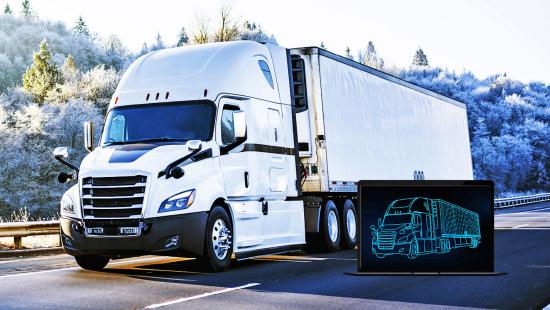The logistic environment is demanding and new challenges keep on rising to the surface. Therefore, many businesses are looking for a stable and intuitive transportation management system (TMS) that optimizes the logistic process and supports in managing (un)foreseen challenges. And honestly, it will probably be a tough nut to crack.
The range of solutions vary greatly. Do they support the required integrations and your business processes or have sufficiently accurate data for your operation? Is the system scalable to keep up with the growth of your organization? Lots of questions, so where does one start really. We’ve listed the top 5 pitfalls and how you to avoid them.
The lack of a technology strategy
The reasons for stakeholders to start looking at a TMS are endless: eliminating manual processes, insufficient use of stored data, need of more flexibility in their system, etc. Companies are often focused on the processes currently in place and forget to think about their strategy in the long term. A clear vision of the target is key to a successful implementation. What are the real needs? What will likely evolve over time? One should never try to stick 100% to an existing operation. In case of process reorganization, the support of supply chain consulting is strongly recommended, in case the Supply Chain Department is not sized to reengineer methods and processes.
Focusing on the purchasing price and not the overall price
When comparing a SaaS solution or a solution hosted locally by the provider, one should also take into account the cost of the servers and the time being spent by the IT department to monitor, running the necessary updates, etc. Stakeholders might get blinded by the actual purchasing price and tend to look over the running costs of the solution.
Not distinguishing must-haves and nice-to-haves
All TMS providers have different offerings, which makes it harder to compare them. Making a list with your must-haves and also one with the nice-to-haves makes this task a lot easier. It helps the comparison of the different options but also helps setting the company’s priorities.
Overlooking integration requirements
It isn’t uncommon that companies invest in software and discover during the implementation that it isn’t compatible with one of their current systems or not able to connect with other supply chain partners IT. Supply chain related integration issues can cause a big cost loss for companies. Carriers, shippers and freight forwarders need to be able to flawlessly share data between their systems and their partners systems. To optimize logistics operations and processes, it is crucial to have the right data. So timely and accurately data sharing is key.
Not defining how to measure the “success” of the project
To measure the success of the implemented software, it is important that you clearly set out your needs and the metrics you will be using for measuring. Are you looking for a TMS because you need to accommodate a new client with a strict deadline? Is your organization growing? Timeframe, cost, benefits, … they all drive the choice for a supply chain software. Knowing the business impact of the software is a key starting point.
If you are starting the search for a Transportation Management System (TMS) it is important to find the perfect match for your organization and to meet your operational goals. Take your time, ask questions and look into all the available options. In the end, making a wrong choice for your company will result in lost time, productivity and costs.

TMS Buyers Guide
Explore the comprehensive guide to select the ideal Transportation Management System for enterprise shippers.

Transportation Management Solutions
Global Transportation Technology to Strengthen Your Supply Chain




